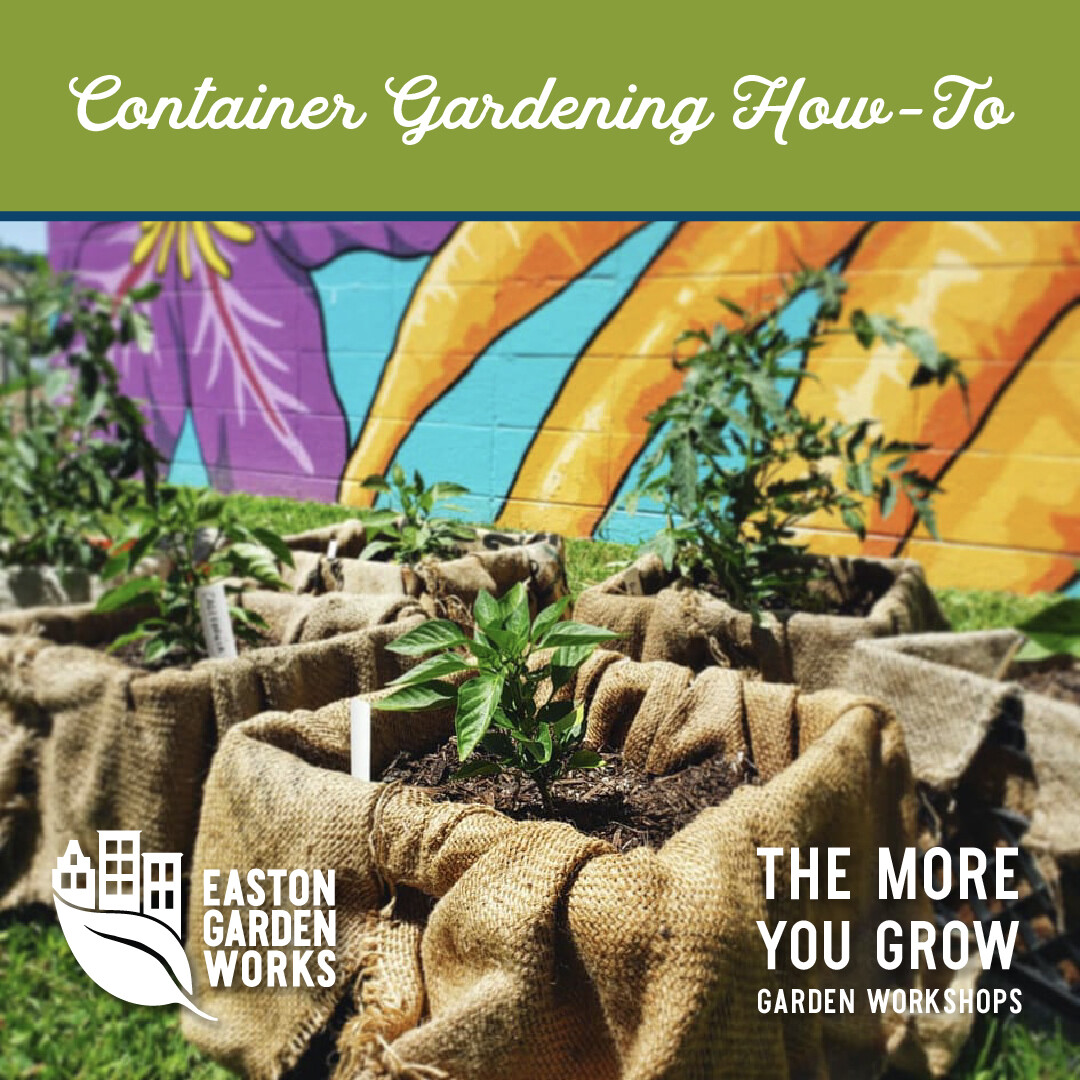Container Gardening 101
 We hosted a container gardening lesson and hands-on building project in May. We put together some very simple 5 gallon bucket and milkcrate gardens, which are useful for homes without a lot of yard space. You can use them seasonally, just like you would plant in-ground. Planting in container gardens can be beneficial in numerous ways: if there is too much rain or a chance of frost to kill your plants, you can bring them inside or into another space easily. Similarly, if it’s getting too hot for certain plants, you can take them into the shade without much effort. They’re also less likely to get diseased or harbor pests.
We hosted a container gardening lesson and hands-on building project in May. We put together some very simple 5 gallon bucket and milkcrate gardens, which are useful for homes without a lot of yard space. You can use them seasonally, just like you would plant in-ground. Planting in container gardens can be beneficial in numerous ways: if there is too much rain or a chance of frost to kill your plants, you can bring them inside or into another space easily. Similarly, if it’s getting too hot for certain plants, you can take them into the shade without much effort. They’re also less likely to get diseased or harbor pests.
Bucket Garden Supplies:
- Clean food-grade 5 gallon bucket.
 Drill with drill bit.
Drill with drill bit.- Soil & compost, plant of choice.
Instructions:
- Drill drainage holes into the bottom of the bucket. About 5 should do.
- Fill with soil and compost and plant your seedling as you would in the ground. Soil should be slightly damp to provide some immediate moisture (without being wet, which would compact them too much).
- Remember that container gardens will warm up and dry out faster than the ground. You should check the moisture level of your container garden frequently and deeply water it. If the bottom roots of the plant aren’t receiving enough water (because we generally water these manually above instead of below the soil), you can sit the bucket in a container of water for the plant to soak up from the bottom. Remember to fertilize your container garden as well. It will need more attention than in-ground plants.
- Certain plants will do better in a container garden – and others will not. Firstly, be aware of where you’re placing your container garden. Remember that they need a lot of sun. Plants that sprawl (like zucchini) may not be a great choice if you do not have a lot of room. You can accommodate climbing cucumbers or peas by sticking a trellis into your bucket! Nightshades do well in bucket gardens because of the added heat: try planting tomatoes, peppers, and eggplants – just be sure they have room for their roots. Some people love growing potatoes in containers because when it’s time to harvest, they’ll simply pull everything from the bucket. Bucket gardens are also nice for lettuce and radishes that don’t need tons of root space.
Milkcrate Garden Supplies:
- Empty milkcrate.

- Landscape fabric/weed cloth or burlap sack.
- Scissors, trowel.
- Soil & compost, plant of choice.
Instructions:
- Cut the fabric or burlap sack to fit into the milkcrate garden. You may need to cut two scraps to be placed perpendicularly to line it on all sides, if the material you have is not wide enough.
- After lining the milkcrate, fill the container with soil and compost and plant your seedling of choice. See above tips for what to plant.
- You will not need to drill holes for drainage since the milkcrate already has them built in. Similarly, make sure to water deeply and frequently, and provide compost a few times over the season.
- At the end of the season, pull out your plant, and let the container sit with chopped leaves, mulch, or straw on top. You can use it again next season.

